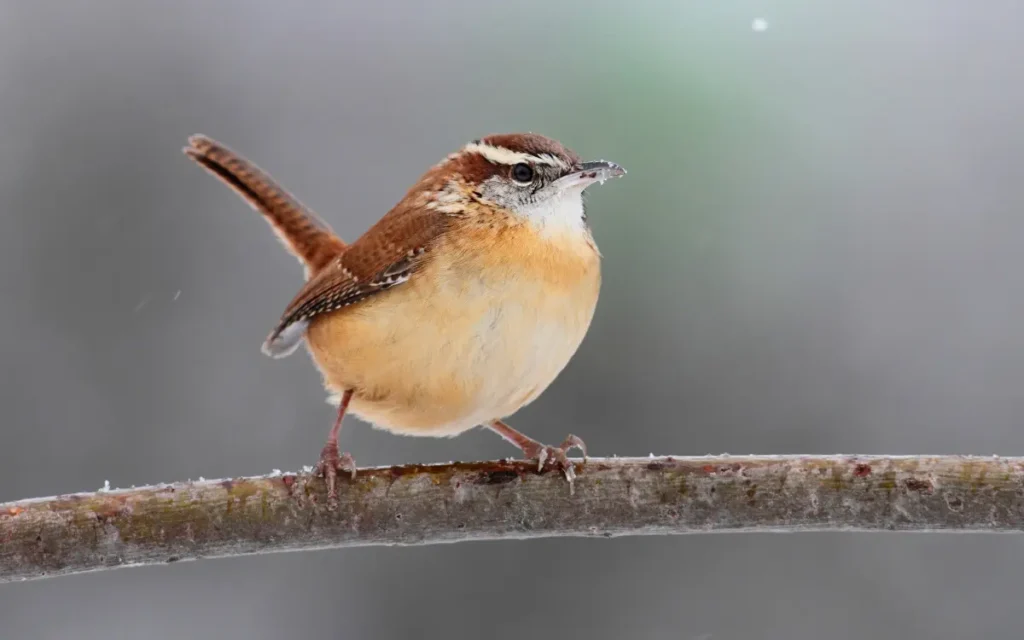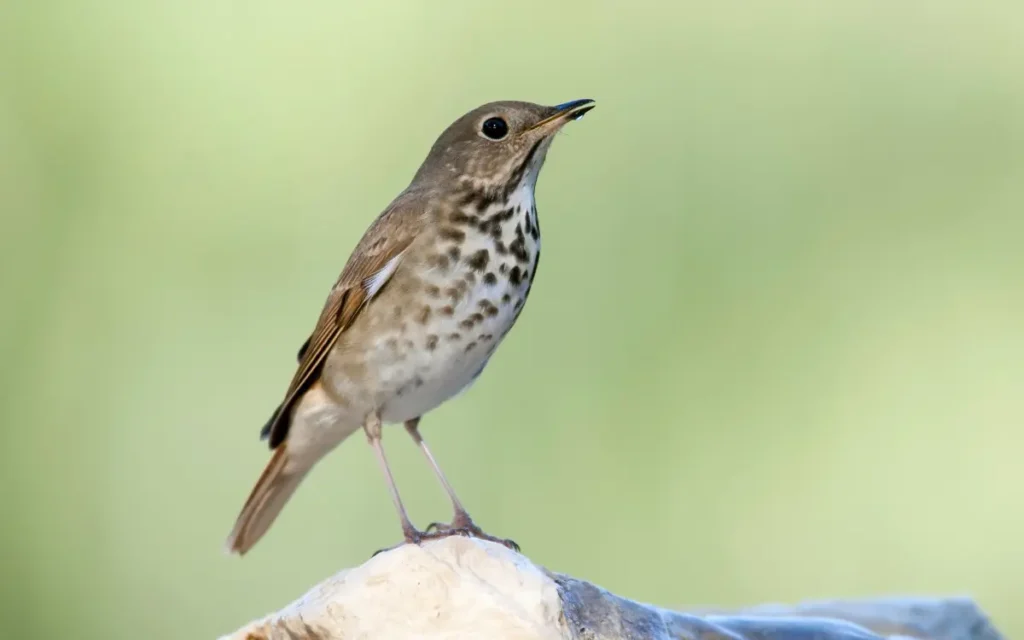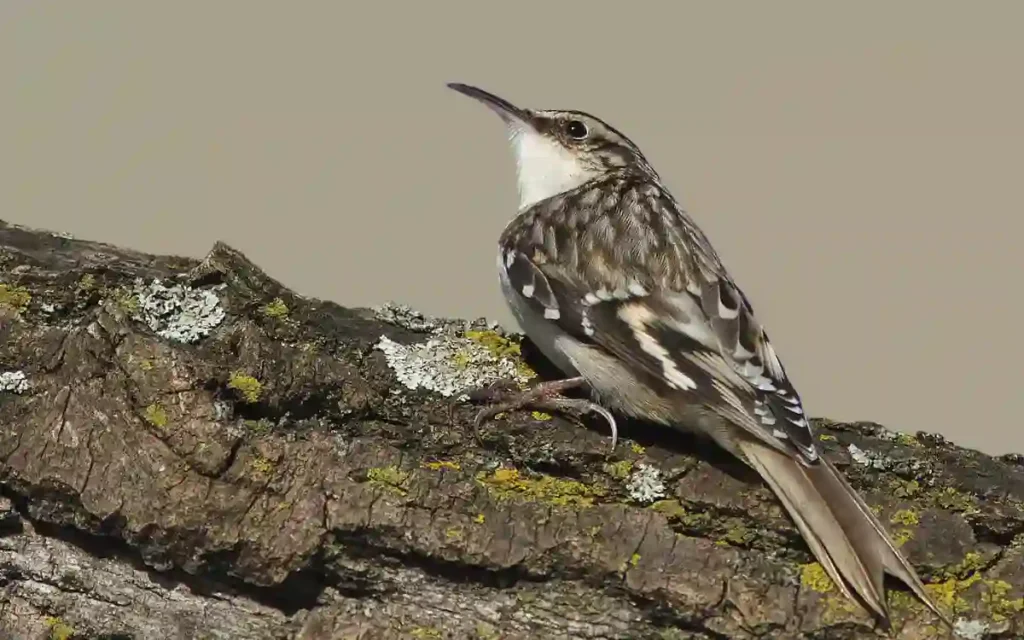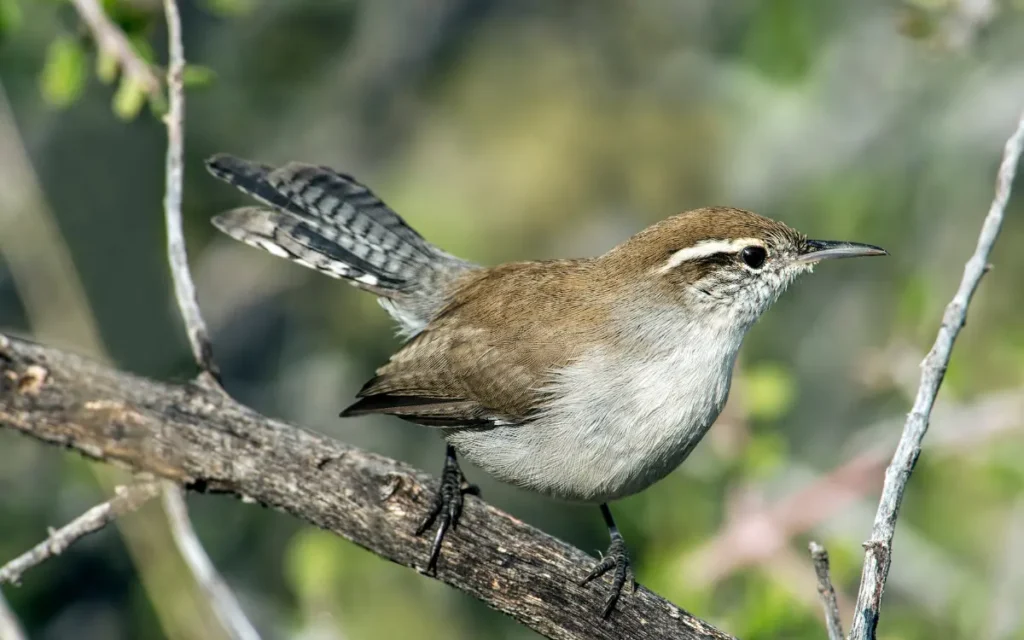16 Brown Birds In Florida

Florida’s Brown birds are most popular because of the many brown bird species found there. So we have listed a special 16 birds that look fabulous.
The Importance of Brown Birds in Florida’s Ecosystem:
In Florida, brown birds play a crucial role in keeping the environment healthy. They are nature’s pest control, eating lots of insects that might otherwise harm plants and crops.
These birds also help in spreading seeds around, which helps new plants to grow in different places. This is important for keeping the forests and fields full of life.
Brown birds are also an important part of the food chain. They are food for larger animals like hawks and snakes. This balance helps to make sure that no one kind of animal becomes too numerous, keeping the ecosystem in check.
1. Brown Thrasher – Toxostoma rufum :

The Brown Thrasher lives in places with lots of bushes and trees, like woods and gardens. They love to sing and have brown feathers. These birds are great at hiding, which makes them hard to find.
They build their nests low in thick bushes, using twigs and leaves. A Brown Thrasher can lay 3 to 5 eggs.
For food, they eat insects, fruits, and seeds. They dig in the soil with their long beaks to find bugs. This helps by controlling the number of insects.
The Brown Thrasher is important in its home, helping control pests and spread seeds.
- Length: 9.1-11.8 in (23-30 cm)
- Weight: 2.1-3.1 oz (61-89 g)
- Wingspan:11.4-12.6 in (29-32 cm)
2. House Wren – Troglodytes aedon :

The House Wren is a tiny bird with a big voice, found in backyards and forests alike. They’re easy to hear because of their loud songs but harder to see due to their small size and brown color.
These wrens build their nests in all sorts of nooks, from old woodpecker holes to plant pots. They fill them with twigs, and a House Wren mother may lay 5 to 8 eggs.
Their diet is mainly insects and spiders, which they catch with quick moves. By eating pests, they help gardens and crops.
House Wrens are helpful, lively little birds that sing loud songs and keep insects under control.
- Length:4.3-5.1 in (11-13 cm)
- Weight:0.3-0.4 oz (10-12 g)
- Wingspan: 5.9 in (15 cm)
3.Carolina Wren – Thryothorus ludovicianus :

The Carolina Wren is a small bird with a loud song that fills the air in wooded areas, gardens, and parks. They have a beautiful cinnamon-brown color that makes them stand out.
These wrens like to make their homes in hidden spots, such as inside hanging plants or in old boots! They use twigs and feathers to build a cozy nest. A Carolina Wren family might have 4 to 6 eggs.
They mostly eat insects and spiders, which they find while hopping around in brushy areas. This bird helps by eating lots of bugs.
Carolina Wrens bring music and pest control to their habitats, making them special neighbors.
- Length:4.7-5.5 in (12-14 cm)
- Weight:0.6-0.8 oz (18-22 g)
- Wingspan: 11.4 in (29 cm)
4. Brown-headed Cowbird – Molothrus ater :

The Brown-headed Cowbird is a bird that has a unique way of life. Instead of building their nests, they lay their eggs in the nests of other birds. This might sound odd, but it’s true! The males are easy to spot with their shiny black feathers and brown heads.
They can lay 5 to 7 eggs each season, each in a different bird’s nest. You can find them almost everywhere, from fields to forests, and they eat seeds and insects. By eating seeds, they help keep plants from taking over too much.
Brown-headed Cowbirds are special birds with a surprising way of living, playing their part in nature by spreading seeds.
- Length:7.5-8.7 in (19-22 cm)
- Weight: 1.5-1.8 oz (42-50 g)
- Wingspan: 14.2 in (36 cm)
5. Marsh Wren – Cistothorus palustris :

The Marsh Wren is a small but mighty bird that loves living in wet places like marshes. They are amazing because they can sing very loud and beautiful songs.
Their homes are nests hidden in tall reeds, where they lay 4 to 6 eggs.They eat bugs and spiders, which helps keep those populations down. This is good for the marsh.
Marsh Wrens are important because they help control insects and their songs make the marsh a lively place. They are tiny marsh guardians, keeping the ecosystem balanced and filled with music.
- Length:3.9-5.5 in (10-14 cm)
- Weight:0.3-0.5 oz (9-14 g)
- Wingspan: 5.9 in (15 cm)
6. Swamp Sparrow – Melospiza georgiana :

The Swamp Sparrow is a shy bird that loves wet, marshy places. With its brown and grey feathers, it blends in well with the swampy background. This bird is special because it can live in places where the ground is almost always wet.
They build their nests close to the ground, hide in thick plants, and lay 3 to 5 eggs.
Their diet includes insects and seeds, which they find in their swampy homes.Eating these seeds helps control the growth of too many plants.
Swamp Sparrows are important for the swamp, eating pests and helping plants grow just right.
- Length:4.7-5.9 in (12-15 cm)
- Weight:0.5-0.8 oz (15-23 g)
- Wingspan: 7.1-7.5 in (18-19 cm)
7.Song Sparrow – Melospiza melodia :

The Song Sparrow is a friendly bird known for its beautiful music. It can live almost anywhere, from forests to gardens. This bird loves to sing, especially in the morning.
Song Sparrows make their nests close to the ground, hidden in bushes or grass, and they lay 3 to 5 eggs.
They eat bugs and seeds, which makes them great for gardens because they help control insects and spread seeds around.
Song Sparrows are important because their songs make the outdoors sound lovely, and they help keep the bug population down while helping plants grow.
- Length:4.7-6.7 in (12-17 cm)
- Weight: 0.4-1.9 oz (12-53 g)
- Wingspan: 7.1-9.4 in (18-24 cm)
Related article:
- 9 Most Cutest Tiny Birds In Florida
- 9 blackbirds in Florida: That attracts you eyes
- 10 Finches in Florida with Photo
- 11 Types species of Geese In Florida: (ID &Images)
8.Field Sparrow – Spizella pusilla :

The Field Sparrow is a small bird with a big heart. It loves open fields and grassy places. This bird is shy but has a sweet, whistling song.
Field Sparrows build their nests on the ground, hiding them in tall grass or bushes. They lay 3 to 5 eggs.
They mostly eat seeds and insects. Eating seeds helps plants spread around, and eating bugs keeps those populations under control.
Field Sparrows are important because they help keep the environment healthy by spreading seeds and eating lots of insects, making them helpful friends in the fields.
- Length:4.7-5.9 in (12-15 cm)
- Weight: 0.4-0.5 oz (11-15 g)
- Wingspan: 7.9 in (20 cm)
9.Savannah Sparrow – Passerculus sandwichensis :

The Savannah Sparrow is a small, busy bird that loves open spaces like fields and marshes. It’s easy to spot because of its streaky brown feathers and notched tail.
These sparrows nest on the ground, making cozy nests hidden in the grass where they lay 4 to 6 eggs.
Their diet is a mix of insects and seeds. This helps control the bug population and also spreads plant seeds around.
Savannah Sparrows are important for their habitats because they help keep insects in check and assist in spreading seeds, making them a key player in their ecosystems.
- Length:4.3-5.9 in (11-15 cm)
- Weight:0.5-1.0 oz (15-28 g)
- Wingspan: 7.9-8.7 in (20-22 cm)
10. Eastern Towhee – Pipilo erythrophthalmus :

The Eastern Towhee is a striking bird with bold colors: black, white, and orange. They love living in areas with lots of bushes and trees, like forests and gardens.
Eastern Towhees make their nests on or near the ground, hidden under bushes. They lay 2 to 6 eggs.
They eat both insects and seeds, which makes them great for the environment. They help control insect populations and spread seeds around.
Eastern Towhees are important because they add beauty to their habitat, help keep bugs in check, and assist in spreading plants. They’re a colorful and helpful part of nature.
- Length: 6.8-8.2 in (17.3-20.8 cm)
- Weight:1.1-1.8 oz (32-52 g)
- Wingspan: 7.9-11.0 in (20-28 cm)
11. Wood Thrush – Hylocichla mustelina :

The Wood Thrush is a beautiful bird with a spotted chest and a lovely singing voice. They live in forests where there are lots of trees and shade.
Wood Thrushes build their nests in trees, making them out of twigs and leaves. They lay 3 to 4 eggs.
Their diet includes insects and fruits. By eating insects, they help keep the forest clean of pests, and eating fruits helps spread seeds.
Wood Thrushes are important for the forest because their songs fill the air with music, and they help control insects and spread plants. They make the forest a better place.
- Length: 7.5-8.3 in (19-21 cm)
- Weight:1.4-1.8 oz (40-50 g)
- Wingspan: 11.8-13.4 in (30-34 cm)
12. Hermit Thrush – Catharus guttatus :

The Hermit Thrush is a shy, brown bird with a beautiful, haunting song. They love quiet, wooded areas where they can be close to the ground.
Hermit Thrushes build their nests on the ground or in low bushes, creating a safe place to lay 3 to 6 eggs.
They eat mostly insects and some berries. This diet helps control bug populations and spreads seeds from the berries they eat.
Hermit Thrushes are important because their songs bring beauty to the woods, and they help keep the environment balanced by eating insects and spreading seeds.
- Length:5.5-7.1 in (14-18 cm)
- Weight:0.8-1.3 oz (23-37 g)
- Wingspan: 9.8-11.4 in (25-29 cm)
Related article: 11 Types of Geese Found In Florida
13. Brown Creeper – Certhia americana :

The Brown Creeper is a tiny bird with a big mission. It blends into the trees with its brown, bark-like feathers. This clever bird loves living in forests where it can climb tree trunks looking for food.
Brown Creepers make their nests behind loose bark on trees, creating a hidden spot to lay 4 to 8 eggs.
They eat insects and spiders, which they pick out of the bark with their curved beaks. This helps keep the trees healthy by controlling pests.
Brown Creepers are important because they help our forests by eating lots of bugs and living quietly among the trees.
- Length:4.7-5.5 in (12-14 cm)
- Weight:0.2-0.3 oz (5-10 g)
- Wingspan: 6.7-7.9 in (17-20 cm)
14. Bewick’s Wren – Thryomanes bewickii :

The Bewick’s Wren is a small bird with a loud voice. It loves places with thick bushes and trees where it can hide and sing.
This bird builds its nest in hidden spots like tree holes or even in old shoes! It makes a cozy home to lay 5 to 7 eggs.
Bewick’s Wrens eat insects and spiders, hunting them in bushes and leaves. This diet helps control the number of bugs around.
Bewick’s Wrens are important because they eat lots of insects and bring beautiful songs to their habitats, making the outdoors more lively.
- Length:5.1 in (13 cm)
- Weight:0.3-0.4 oz (8-12 g)
- Wingspan: 7.1 in (18 cm)
15.Winter Wren – Troglodytes hiemalis :

The Winter Wren is a tiny bird with a powerful song that fills the forest. It loves dense woods and thick underbrush where it can hide and sing.
These wrens build their nests close to the ground, tucked away in crevices or under roots, where they lay 5 to 6 eggs.
They mainly eat insects and spiders, which they find in leaf litter and on bark. This diet helps keep the bug population under control.
Winter Wrens are important because they help control pests and add beautiful music to the woods, making them a joyous part of their ecosystem.
- Length:3.1-4.7 in (8-12 cm)
- Weight:0.3-0.4 oz (8-12 g)
- Wingspan: 4.7-6.3 in (12-16 cm)
16.White-throated Sparrow – Zonotrichia albicollis :

The White-throated Sparrow is a pretty bird with a white throat and a sweet song. It likes living in forests and gardens, where it can find plenty of food.
These sparrows nest on the ground, hiding their nests in thick grass or bushes. They lay 4 to 5 eggs.
They eat seeds, fruits, and insects. This helps plants by spreading their seeds and keeps the insect population in check.
White-throated Sparrows are important because they help with plant growth and control bugs, all while singing beautiful tunes that make the outdoors even more enjoyable.
- Length:6.3-7.1 in (16-18 cm)
- Weight:0.8-1.1 oz (22-32 g)
- Wingspan: 7.9-9.1 in (20-23 cm)
Conservation Efforts and How to Help:
Florida is working hard to protect its brown birds. Efforts include saving their natural homes and making sure they have plenty to eat. This is important not just for brown birds, but for all birds, including black birds in Florida.
You can help with these efforts! Joining citizen science projects, like counting birds, gives scientists important information. Also, you can make your garden a safe place for birds by adding plants that they like and places for them to nest.
Everyone can make a difference. By taking small steps, like planting native trees and keeping pets inside, we help keep our bird friends.
Frequently Asked Questions:
Q: What is Florida’s most common bird?
Ans:The Northern Mockingbird is considered Florida’s most common and the official state bird.
Q: What kind of bird is brown?
Ans:Many birds can be brown, including sparrows, wrens, and thrashers, which are common in various habitats.
Q: What is a small red-brown bird in Florida?
Ans:The House Finch is a small red-brown bird often seen in Florida, known for its reddish head and breast.
Q: What are the brown birds with white spots in Florida?
Ans:The Wood Thrush is a brown bird with white spots on its belly and chest, common in Florida’s forests.
Q: How can I attract brown birds to my backyard in Florida?
Ans:Plant native vegetation, set up bird feeders with seeds, and provide water sources to attract brown birds to your backyard.
Q: What is the best time to see brown birds in Florida?
Ans:The best time to see brown birds in Florida is during the early morning or late afternoon, especially during the spring and fall migration seasons.
Conclusion:
Florida’s brown birds are a special part of nature. By learning about them and helping keep their homes safe, we can make sure they’re around for a long time. Let’s all do our part to protect these amazing birds and enjoy their beauty.






